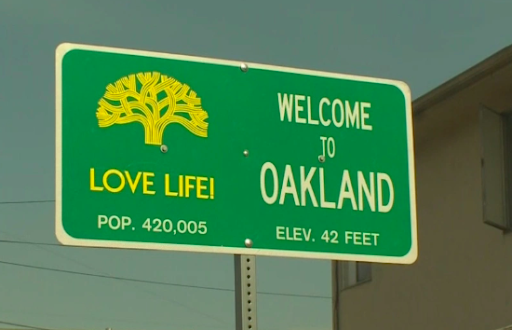| February 27, 2020 |
| “If power plants, waste handling, chemical plants and transport systems were located in wealthy areas as quickly and easily as in poor areas, we would have had a clean, green economy decades ago.”— Majora Carter, Urban Revitalization Strategist Dear OUSD Community:Unfortunately, this story is all too familiar to our students of color living in poverty. They–and generations of their families–have borne the brunt of racist environmental policies and practices that have put their health and lives in jeopardy.The last few days have been incredibly challenging for the students, families, and staff of McClymonds High School which has been temporarily closed due to a possible environmental hazard. It’s most unfortunate that West Oakland, and particularly McClymonds, are being impacted by the historical legacy of mixed industrial and residential neighborhoods which has disproportionately affected African Americans and other communities of color in Oakland and many cities across the country. I am truly sorry for the worry and anxiety that McClymonds’ students and families have felt and the disruption to their lives and routines. We are doing everything we can to ensure a safe and healthy school environment for our students that we reopen as soon as possible. Toxic Industries and ‘Certain’ NeighborhoodsThis goes well beyond this one school and campus. Many parts of our city have been impacted by the legacy of toxic industries being concentrated in certain neighborhoods. Moreover, studies have found that one’s zip code has a profound impact on one’s health. According to an Alameda County Public Health Department presentation entitled How Place, Racism and Poverty Matter for Health in Alameda County, “Compared to a white child born in the affluent Oakland Hills, an African American child born in West Oakland can expect to live 14 fewer years.” Moments like this call on us to take a hard look at ourselves in the mirror to honestly examine how we are facing these issues as a city, state and nation, and actively looking to make necessary changes. This latest incident is one more urgent call to action to address these long-standing injustices. We must show our collective will that, as Majora Carter says, “No community should be saddled with more environmental burdens and less environmental benefits than any other.” Taking Action to Ensure Safety at McClymondsOn Friday afternoon, Feb. 14, OUSD was notified by Alameda County about the discovery of trichloroethylene (TCE) – a hazardous material – in the groundwater under part of the McClymonds High School campus. To be clear, it is NOT in the drinking water.On Monday, Feb. 17, OUSD schools and central office were closed for Presidents’ Day.On Tuesday, Feb. 18, we convened with local and state agencies to learn more about this issue and come up with a plan. We immediately started putting a testing plan in place (ordering tests, scheduling test sites, etc). It’s important to note that the test results we were given did not definitively indicate a health threat, they just told us that more testing was needed.On Wednesday, Feb. 19, after further assessment and planning, I decided to temporarily close the school for Thursday and Friday, and until further testing is completed. On Tuesday, Feb. 25, McClymonds students started attending classes at one of three different OUSD campuses: Ralph Bunche, West Oakland Middle School (WOMS), and Westlake/Metwest. These locations were selected due to space availability, access to public transportation lines, and because all are part of the McClymonds feeder patterns. Partnerships and AppreciationsWe want our McClymonds community back in their home school as soon as possible, but the bottom line is we cannot go back until we know it is safe.While preliminary follow up test results look encouraging, they were just the first step. We are currently doing the next round of tests, and once we have the results we will take the steps necessary to ensure a safe and healthy school. In the meantime, we are making a variety of plans to ensure that we can minimize the disruption to McClymonds students, families, and staff.I want to thank the Bunche, WOMS, and MetWest/Westlake school communities for their flexibility and grace in welcoming the McClymonds community at their schools. We know change can be hard, but I have been so happy to see how supportive these communities have been. I would expect nothing less.I also want to thank Dilan Roe from Alameda County Healthcare Services Agency and the team from the California Department of Toxic Substances Control (DTSC) for acting quickly and being in community with information and assistance. The DTSC is the state oversight agency for this issue and we are working closely with them.We also deeply appreciate our elected community leaders who have stepped up to ensure this issue gets the attention and resources it deserves. Council Member Lynette McElhaney, Supervisor Keith Carson, and the West Oakland Environmental Indicators Project hosted last night’s community meeting to hear concerns and share information about how to address environmental issues in West Oakland and our city. We appreciate Mayor Libby Schaaf for attending the meeting and for her ongoing support.By the end of the week we will share updated information about temporary housing for McClymonds students. The week of March 9, we expect to receive official test results and recommendations back from the DTSC. Based on those test results, we can determine our next steps. We will keep the community informed as results become known and plans finalized. Please visit our website for resources and more information: www.ousd.org/mcclymondstcePlease share your thoughts about this messageRespectfully, Dr. Kyla Johnson-Trammell Superintendent |
What do you think?

